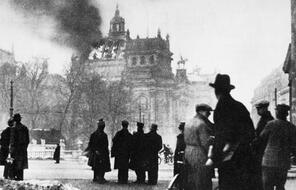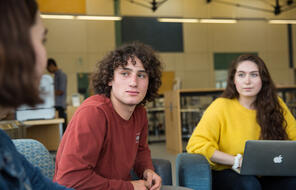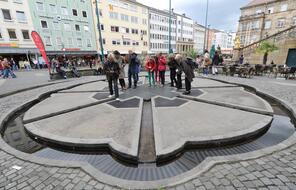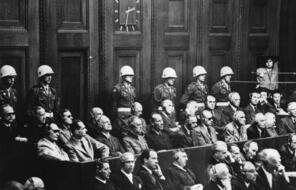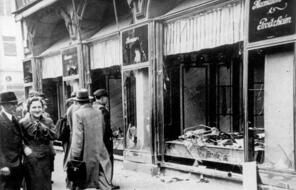The Night of the Long Knives
Subject
- History
Language
English — USUpdated
Night of the Long Knives: Jonathan Petropoulos
Adolf Hitler was determined to put down all opposition—including opposition within his own party. By June 1934, he was convinced that the SA—the Nazis’ own storm troopers, often called Brown Shirts—and Ernst Röhm, their leader, had outlived their usefulness. Known as intimidating street brawlers, the Brown Shirts were regarded as “a bunch of thugs” by a growing number of Germans. The nation’s military leaders were also critical of the SA. Many of them resented the fact that the Treaty of Versailles had limited the army to 100,000 men while the SA, as the Nazis’ main paramilitary force, numbered more than 2 million. They also feared Röhm’s ambition to take charge of the military. As Hitler planned to soon increase the size of the German armed forces, he needed to solidify the support of these military leaders. Rich industrialists also did not approve of the violence they associated with the storm troopers. Some were also bothered by the fact that Röhm was homosexual. Homosexuality was illegal and widely considered immoral in German society. The widespread awareness of Röhm’s sexual orientation made it harder for the Nazis to build ties to conservatives and church leaders.
On June 30, Hitler ordered the SS (the Nazis’ elite guard) and the regular army to murder more than 200 SA leaders, including Röhm. They also killed Kurt von Schleicher and his wife. Schleicher, a friend of President Paul von Hindenburg, had been chancellor of Germany just before Hitler took over in 1933, and he had no connections to Röhm or the SA.
Most people did not know about the events of June 30 until days later. The news came out only when Hitler’s cabinet declared the killings “legal” after the fact. The newspapers reported that Hindenburg had congratulated Hitler on his “courageous personal intervention.” Two weeks later, Hitler justified the murders in a speech broadcast on the radio: “If anyone approaches me and asks why I did not resort to the regular courts of justice then all I can say to him is this: in this hour I was responsible for the fate of the German people, and thereby I became the supreme Justiciar [judicial officer] of the German people....And everyone must know for all future time that if he raises his hand to strike the State, then certain death is his lot." 1
According to historian Lucy S. Dawidowicz, the massacre was misunderstood within Germany as well as outside the nation. She explains that instead of realizing that the country was being run by “a gang of criminals,” “many Germans believed that the purge of the SA represented Hitler’s wish to halt the arbitrary terror of the SA in the streets and to restore a measure of legality to the country." 2
Christabel Bielenberg, a British woman who had become a German citizen after her marriage to a German, was among those interpreting the events this way. She was out of the country on June 30. When she returned, she found growing support for Hitler:
It was considered that . . . with the murder of Röhm and the eclipse of his storm troopers (although the manner in which it had been carried out had not been exactly savory), the Revolution had to all intents and purposes become respectable. Once everything distasteful had been neatly swept under the carpet, there was something almost touching about the anxious childlike pleasure with which so many tried to share in what they seemed to hope was a newly discovered respectability. Unpleasantnesses, of course there were unpleasantnesses; but such things, if talked about at all, must be seen in perspective. There were so many more positive aspects of the regime to chat about. 3
Many army officers celebrated with bottles of champagne. One general told his fellow officers that he wished he had been there to see Röhm shot. A retired captain named Erwin Planck was among the few who thought the rejoicing was out of place. He told an officer, “If you look on without lifting a finger, you will meet the same fate sooner or later." 4
Connection Questions
- What happened on the “Night of the Long Knives”? How did Hitler justify the actions taken that night?
- Why did some people feel the massacre turned Hitler’s regime from “a gang of criminals running the country” to one with “a newly discovered respectability”?
- Would the Night of the Long Knives have been possible in February 1933? What earlier events prepared the nation to accept Hitler’s version of what happened that night? How did the Night of the Long Knives help to create a dictatorship out of a democracy?
- 1Quoted in Richard J. Evans, The Third Reich in Power (New York: Penguin Books, 2005), 37–38.
- 2Lucy S. Dawidowicz, The War against the Jews, 1933–1945 (New York: Holt, Rinehart and Winston, 1975), 82.
- 3Christabel Bielenberg, Christabel (New York: Penguin, 1989), 27–28.
- 4Richard J. Evans, The Third Reich in Power (New York: Penguin, 2005), 508, 41.
How to Cite This Reading
Facing History & Ourselves, “The Night of the Long Knives”, last updated August 2, 2016.


